Documents

HERITAGE2020 - International Conference Paper
The subject of this paper is traditional mortar preparation and materials, particularly earth lime and air or feebly hydraulic hot mixed lime mortars with particular emphasis upon British practice and experience, whilst stressing their international ubiquity historically. It will demonstrate their appropriate functional performance and attest to the need to use similar mortars, similarly composed and prepared, in the repair and conservation of traditionally constructed buildings. It will question how commonly modern Natural Hydraulic Limes may be considered to be like-for-like or of compatible strength and functional performance.
View Document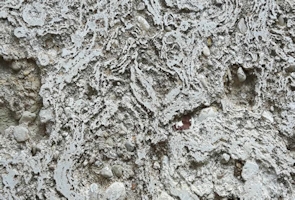
MA Dissertation (Conservation Studies, University of York)
The focus of this research is an assessment of historical texts on the manipulation of lime to make mortars: how these were made and to which ends they were used, as illustrated by published writings upon the subject from the UK, France, Spain and North America. The insights from this research are balanced against the professional experience of the author in using traditional mortars for 15 years, as well as being supplemented by research into archived building accounts and the personal testimony of retired craftsmen.
View Document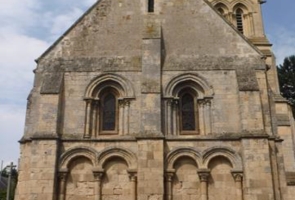
Contemporary Presentation Paper, France (2023)
Les preuves techniques ne suggèrent pas de raccourcis pour parvenir à une bonne construction; il souligne systématiquement la découverte par des moyens scientifiques de la logique des traditions de construction établies, qui ne devraient être modifiées qu'en pleine connaissance des conséquences. Comité RIBA – L'utilisation architecturale des matériaux de construction – Études de construction d'après-guerre n°18 1946 Londres HMSO pour le ministère des Travaux publics.
View Document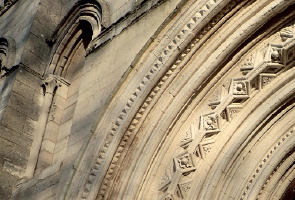
Contemporary Research Paper
The revival in the use of hot-mixed lime mortars has been gathering pace across the UK and Ireland over the past three years, and the use of quicklimes in conservation and repair is now becoming increasingly routine. This has injected new energy and insight into the wider lime revival, affecting not just construction mortars but also decorative finishes and surface treatments.
View Document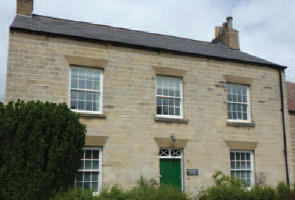
Contemporary Research Paper
The "Hot Mixed Mortars Revival" has been the collective effort of Irish, Scots and English masons and conservation professionals and has reenergized the lime movement across the British Isles. This paper seeks to provide a narrative for this, as well as to summarise the essential benefits of hot mixed lime mortars for use in the compatible repair and conservation of old and historic buildings across the world.
View Document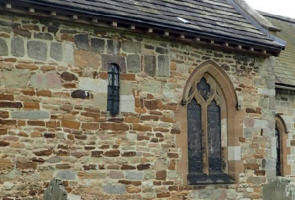
Contemporary Research Paper
A hot-mixed lime mortar is prepared using quicklime. Typically this involves a "dry slake", during which the quicklime is mixed with naturally moist or slightly moistened aggregate (sand, stone dust or subsoil). In the case of sand or stone-dust mortars, this initial dry slake is followed by the addition of water sufficient to produce a workable mortar for immediate or later use.
View Document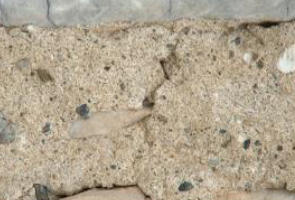
Contemporary Research Paper
Most lime mortars, for most uses, for most of history, were hot-mixed using quicklime. Lime mortars commonly used today, for conservation and repair, or for new build, tend to be Natural Hydraulic Lime-based or designed ‘products’, less often putty lime mortars. This seems anomalous and confounds our general inclination towards like-for-like, compatible repair using authentic materials – as well as the requirement of BS7913 (1998).
View Document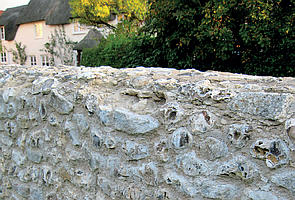
Contemporary Research Paper
The last five years or so have seen a revival in use of hot-mixed mortar. While many people have welcomed this as a way of making more authentic mortars for conservation, others are sceptical or even hostile to what they see as a new fad. Before exploring the pros and cons of hot-mixed mortars, it is worth reflecting on the past 40 years of lime use and how we have arrived at the current situation.
View Document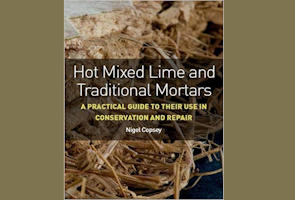
Book (Introduction)
Traditional mortars are eminently workable, effectively porous, economic in use and appropriately durable. Used in buildings for thousands of years, these materials are ideal for repair and conservation work. Unlike cement or modern hydraulic lime, their routine use would make a significant contribution in the struggle against climate change. However, despite the 1975 'lime revival' there remains a deficit in research into the most-used traditional mortars. This book seeks to redress the balance.
View Document Full Book (Amazon.co.uk)
Guide
Lime mortars have been used in buildings for thousands of years and continue to be used for the repair and maintenance of traditional buildings. Most lime mortars currently used in Scotland are based on Natural Hydraulic Limes (NHLs) which are sold in bags as a dry hydrate powder. These products have only been commercially available relatively recently. Prior to the introduction of dry hydrate powdered lime, lime mortars were prepared using either lime putty or quicklime mixes, the latter made as a "hot-mix". These traditional methods of preparing a lime mortar can still be used in building and repair work today.
View Document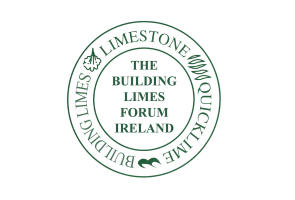
Guide
For over 1,000 years, hot-mix lime mortar was used extensively in the building of the masonry heritage of Ireland. To repair these structures following the accepted principle of conservation, "like for like", we must seriously consider how we can create more closely matched mortars than those we have been using to date. We have indigenous, commercially available quicklime, so a practical solution would be to use this in combination with imported natural hydraulic limes and/or pozzolans, as required.
View Document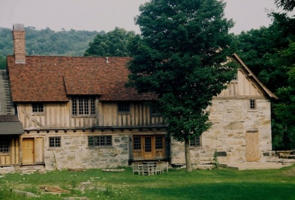
Consultancy
The most commonly found historic mortar proportion encountered in fat and feebly hydraulic lime mortars is 2 lime: 3 aggregate. This was achieved by hotmixing 1 quicklime: 3 aggregate. Successful mixes might also be 1:2 or 1:4. Historic mixes of 1:3 are rarely, if ever, found before the 20thC, when cementgauged slaked lime mixes were typically 1 binder:3, eg 1:2:9. The additional strength of the cement compensated for the loss of lime Though a 1:2:9 mix was typically weaker and less tenacious than a traditional lime mortar mix, it gained an initial set quickly. Historically, hydraulic lime mortars were mixed from quicklime at 1:2 or 1:1, being mainly used underwater and underground.
View Document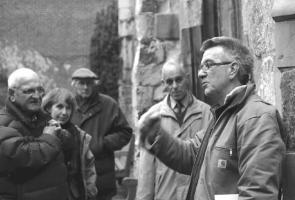
Periodical (Turkey)
Nigel Copsey began working with stone as a drystone waller in Cornwall (UK). He trained as a stonemason and carver at Weymouth College in Dorset, becoming established as a lettercutter and stonemason working mainly in the field of stone and building conservation. Based originally in the South-West, the company has carried out projects across England and more recently in Vermont and Andalucia. Nigel Copsey is a fully accredited member of the United Kingdom Institute of Conservation. He subscribes broadly to the principles of the Society for the Protection of Ancient Buildings (SPAB) and to the ideals of its founder, William Morris. He aspires to a thoroughgoing and articulate day to day ethical practice in accordance with international conservation treaties.
View DocumentAnglican Cathedral Church of the Redeemer: Link
Bank Slag: Link
Bank Top Kilns: Link
Beverley Gate: Link
Clay Mortar from Normandy: Link
Esk Valley Mine: Link
Rosedale East Iron Kilns: Link
Stonehouse: Link
The Guild Hall York: Link
The Roman Kiln: Link
Vindolanda Roman Fort: Link
Warren Moor Mine: Link
Wayne County Courthouse: Link
York House: Link
York Minster: Link
Old House: Link
Farmhouse: Link
Rosedale Iron Workers Cottage: Link
Thornton Hall: Link
Sandsend Kiln and Milhouse: Link
Ironstone Mine: Link
60 Goodramgate, York: Link
Old St. Margaret’s, Harwood Dale: Link
Old Sun Inn: Link
Hall Farm: Link
Aggregates for Lime Mortars - Thinking Over Time. Literature Review. : Link
Study: Antiviral Effect of Lime on Influenza A Virus H5N1 (A/Cambodia/408008/2005): Link
Field Prepared Mortar Performance Test Notes: Link
What is NHL? Does it Have a Role in Conservation?: Link
DIBDIN Mortar Strengths: Link
Hot Mixed Lime Mortars: Link
Hot Mix Economics: Link
Lime Revival: Link
The Problem with NHLs: Link
Hot Lime Harling: Link
Plastering: Link
Trent Bridge Nottingham: Link
Rosedale Method Statement: Link
Mortar ASTM International 2007: Link
Old Trent Bridge, Nottingham: Link
Hydrated Lime Fact Sheet: Link
Lime Facts: Link
DIBDIN Free Lime Table: Link
Mortar Sample Examination, Rudge Memorial Chapel, Lincoln: Link
Lime and Building Patterns: Link
Bond of Mortar to Masonry Units: Link
The New Practical Builder and Workman's Companion: Link
Mud Mortar: Link
Practical and Theroretical Manual on Lime Burning: Link
Rudimentary Treatise on Limes, Cements, Mortars, Concretes, Mastics and Plastering: Link
New Pratical Encyclopedia of Building and of Habitation: Link
Rural School of Architecture: Link
Durability of Mortar and Masonry: Link
A Treatise on Building in Water: Link
The Rudiments of Practical Bricklaying: Link
Gillmore on Hydraulic Lime Production in France: Link
Construction of the Edystone Lighthouse with Stone: Link
London Prices of Bricklayers’ Materials and Works Both of New Buildings and Repairs: Link
Handbook on Masonry Design and Construction: Link
Malton Estate Agent's Memorandum Book: Link
The Rural Economy of Yorkshire: Link
The Art of the Mason: Link
Lime, Hydraulic Cement, Mortar and Concrete: Link
Theoretical and Practical Treatise on the Art of Building: Link
Limestone and its Products, Their Nature, Production and Uses: Link
The Cyclopedia or Universal Dictionary of Arts, Sciences and Literature: Link
Strength Considerations in Mortar and Masonry: Link
Treussart Petot and Courtois on Mortars: Link
Lime and Cement: Link
Masons and Builders Guide: Link
The Importance of the Slake: Link
Preparation and Use of Mud Mortar in Masonry: Link
Mud Mortars in Masonry Construction: Link
Earth Mortars and Earth Building as Referenced in Old Texts: Link
Lime Plastering: Link
Essays on Hydraulic and Common Mortars and on Lime Burning: Link
Plastering in the UK and Europe: Link
Earth Plastering Analysis and Specification for Conservation Repair and Restoration Works in Malton: Link
Lime Archives: Link
Practical Treatise on Limes Hydraulic Cements and Mortars: Link
Theoretical and Practical Treatise of the Art of Calcining Limestone and Mortars: Link
Lime Consensus Within Old Texts: Link
Cyclopedia of Practical Husbandry Rural Affairs in General: Link
Malton 1593 Terrier Transcription: Link
New Pratical Encyclopedia of Building and of Habitation: Link
Mud Vitruvius: Link
Building Manual of Masons: Link
Hot Lime Mortars: Link
Winter Working: Link
Materials of Construction: Link
Mortars That Are Used in the Construction of Civil and Hydraulic Works: Link
The Complete Works of Gaius Plinius Secundus Delphi: Link
De Agricultura: Link
Adams H 1906: Link
Cyclopedia of Bricklaying Stone Masonry Concretes Stuccos and Plasters: Link
Corpus Christi College 1517-18: Link
Dumbarton Castle: Link
Harding V and Knight L, London Bridge: Link
Lime and Airmortars Wolters 1870 Translation: Link
Matthew Brettingham Notebook: Link
Rivington Building Construction Part III Materials, 1879: Link
Scots Royal Building Accounts: Link
Del Rio 1830: Link
Dossie: Link
Espinosa 1859: Link
George Semple: Link
Gwilt 1839: Link
Higgins 1780: Link
Isaac Ware 1756: Link
John Nicholson: Link
Lazell 1915: Link
Lucas E: Link
Millar - Plastering, Plain and Decorative: Link
Ministry of Works 1950: Link
Mortimer 1708: Link
Moxon 1703: Link
Plymouth Shambles: Link
Semple: Link
Vallado 2009: Link
Vitruvius: Link
Westminster Specifications 1847: Link
Wood Ash: Link
Second Tuesday Talks - Sticking Point (Adhesion in Craft and Conservation): Link












